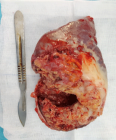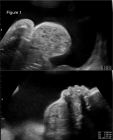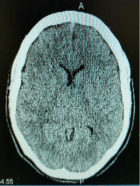Abstract
Review Article
The Potential Use of Dimethyltryptamine against Ischemia-reperfusion Injury of the Brain
Attila Kovacs, Anna Mathe and Ede Frecska*
Published: 19 April, 2024 | Volume 8 - Issue 1 | Pages: 050-056
Ischemia-Reperfusion Injury (IRI) is the outcome of two intertwined pathological processes resulting from the shortage of blood flow to tissues and the subsequent restoration of circulation to a previously ischemic area. IRI (sometimes just one side of the dyad) remains one of the most challenging problems in several branches of emergency medicine. Mitochondrial and endoplasmic reticulum dysfunction is a crucial pathological factor involved in the development of IRI.
The sigma-1 receptor (Sig1-R) is an intracellular chaperone molecule located between the mitochondria and endoplasmic reticulum with an apparent physiological role in regulating signaling between these cell organelles and serves as a safety mechanism against cellular stress. Therefore, amelioration of IRI is reasonably expected by the activation of the Sig1-R chaperone. Indeed, under cellular stress, Sig1-R agonists improve mitochondrial respiration and optimize endoplasmic reticulum function by sustaining high-energy phosphate synthesis.
The discovery that N, N-dimethyltryptamine (DMT) is an endogenous agonist of the Sig1-R may shed light on yet undiscovered physiological mechanisms and therapeutic potentials of this controversial hallucinogenic compound. In this article, the authors briefly overview the function of Sig1-R in cellular bioenergetics with a focus on the processes involved in IRI and summarize the results of their in vitro and in vivo DMT studies aiming at mitigating IRI. The authors conclude that the effect of DMT may involve a universal role in cellular protective mechanisms suggesting therapeutic potentials against different components and types of IRIs emerging in local and generalized brain ischemia after stroke or cardiac arrest.
Read Full Article HTML DOI: 10.29328/journal.jnnd.1001097 Cite this Article Read Full Article PDF
Keywords:
Brain ischemia; Dimethyltryptamine; Ischemia-reperfusion injury; Sigma-1 receptor; Stroke
References
- Chatterjee PK. Novel pharmacological approaches to the treatment of renal ischemia-reperfusion injury: a comprehensive review. Naunyn Schmiedebergs Arch Pharmacol. 2007 Oct;376(1-2):1-43. doi: 10.1007/s00210-007-0183-5. Epub 2007 Sep 22. PMID: 18038125.
- Carden DL, Granger DN. Pathophysiology of ischaemia-reperfusion injury. J Pathol. 2000 Feb;190(3):255-66. doi: 10.1002/(SICI)1096-9896(200002)190:3<255::AID-PATH526>3.0.CO;2-6. PMID: 10685060.
- Eltzschig HK, Eckle T. Ischemia and reperfusion--from mechanism to translation. Nat Med. 2011 Nov 7;17(11):1391-401. doi: 10.1038/nm.2507. PMID: 22064429; PMCID: PMC3886192.
- Peto K, Nemeth N, Mester A, Magyar Z, Ghanem S, Somogyi V, Tanczos B, Deak A, Bidiga L, Frecska E, Nemes B. Hemorheological and metabolic consequences of renal ischemia-reperfusion and their modulation by N,N-dimethyl-tryptamine on a rat model. Clin Hemorheol Microcirc. 2018;70(1):107-117. doi: 10.3233/CH-170361. PMID: 29660915.
- Penke B, Fulop L, Szucs M, Frecska E. The Role of Sigma-1 Receptor, an Intracellular Chaperone in Neurodegenerative Diseases. Curr Neuropharmacol. 2018;16(1):97-116. doi: 10.2174/1570159X15666170529104323. PMID: 28554311; PMCID: PMC5771390.
- Sies H, Berndt C, Jones DP. Oxidative Stress. Annu Rev Biochem. 2017 Jun 20;86:715-748. doi: 10.1146/annurev-biochem-061516-045037. Epub 2017 Apr 24. PMID: 28441057.
- Kalogeris T, Baines CP, Krenz M, Korthuis RJ. Cell biology of ischemia/reperfusion injury. Int Rev Cell Mol Biol. 2012;298:229-317. doi: 10.1016/B978-0-12-394309-5.00006-7. PMID: 22878108; PMCID: PMC3904795.
- Mizuma A, Yenari MA. Anti-Inflammatory Targets for the Treatment of Reperfusion Injury in Stroke. Front Neurol. 2017 Sep 7;8:467. doi: 10.3389/fneur.2017.00467. PMID: 28936196; PMCID: PMC5594066.
- Zuaiter M, Axelrod JH, Pizov G, Gofrit ON. Hyper-Interleukin-6 Protects Against Renal Ischemic-Reperfusion Injury-A Mouse Model. Front Surg. 2021 May 13;8:605675. doi: 10.3389/fsurg.2021.605675. PMID: 34055865; PMCID: PMC8155529.
- Naito H, Nojima T, Fujisaki N, Tsukahara K, Yamamoto H, Yamada T, Aokage T, Yumoto T, Osako T, Nakao A. Therapeutic strategies for ischemia reperfusion injury in emergency medicine. Acute Med Surg. 2020 Apr 13;7(1):e501. doi: 10.1002/ams2.501. PMID: 32431842; PMCID: PMC7231568.
- Nemes B, Pető K, Németh N, Mester A, Magyar Z, Ghanem S, Sógor V, Tánczos B, Deák Á, Kállay M, Bidiga L, Frecska E. N,N-dimethyltryptamine Prevents Renal Ischemia-Reperfusion Injury in a Rat Model. Transplant Proc. 2019 May;51(4):1268-1275. doi: 10.1016/j.transproceed.2019.04.005. PMID: 31101212.
- Sharma N, Patel C, Shenkman M, Kessel A, Ben-Tal N, Lederkremer GZ. The Sigma-1 receptor is an ER-localized type II membrane protein. J Biol Chem. 2021 Nov;297(5):101299. doi: 10.1016/j.jbc.2021.101299. Epub 2021 Oct 11. PMID: 34648767; PMCID: PMC8561001.
- Hayashi T, Su TP. Sigma-1 receptor chaperones at the ER-mitochondrion interface regulate Ca(2+) signaling and cell survival. Cell. 2007 Nov 2;131(3):596-610. doi: 10.1016/j.cell.2007.08.036. PMID: 17981125.
- Hayashi T. The Sigma-1 Receptor in Cellular Stress Signaling. Front Neurosci. 2019 Jul 16;13:733. doi: 10.3389/fnins.2019.00733. PMID: 31379486; PMCID: PMC6646578.
- Delprat B, Crouzier L, Su TP, Maurice T. At the Crossing of ER Stress and MAMs: A Key Role of Sigma-1 Receptor? Adv Exp Med Biol. 2020;1131:699-718. doi: 10.1007/978-3-030-12457-1_28. PMID: 31646531.
- Zhemkov V, Geva M, Hayden MR, Bezprozvanny I. Sigma-1 Receptor (S1R) Interaction with Cholesterol: Mechanisms of S1R Activation and Its Role in Neurodegenerative Diseases. Int J Mol Sci. 2021 Apr 15;22(8):4082. doi: 10.3390/ijms22084082. PMID: 33920913; PMCID: PMC8071319.
- Gromek KA, Suchy FP, Meddaugh HR, Wrobel RL, LaPointe LM, Chu UB, Primm JG, Ruoho AE, Senes A, Fox BG. The oligomeric states of the purified sigma-1 receptor are stabilized by ligands. J Biol Chem. 2014 Jul 18;289(29):20333-44. doi: 10.1074/jbc.M113.537993. Epub 2014 May 20. PMID: 24847081; PMCID: PMC4106346.
- Mishra AK, Mavlyutov T, Singh DR, Biener G, Yang J, Oliver JA, Ruoho A, Raicu V. The sigma-1 receptors are present in monomeric and oligomeric forms in living cells in the presence and absence of ligands. Biochem J. 2015 Mar 1;466(2):263-271. doi: 10.1042/BJ20141321. PMID: 25510962; PMCID: PMC4500508.
- Chu UB, Ruoho AE. Biochemical Pharmacology of the Sigma-1 Receptor. Mol Pharmacol. 2016 Jan;89(1):142-53. doi: 10.1124/mol.115.101170. Epub 2015 Nov 11. PMID: 26560551.
- Mori T, Hayashi T, Hayashi E, Su TP. Sigma-1 receptor chaperone at the ER-mitochondrion interface mediates the mitochondrion-ER-nucleus signaling for cellular survival. PLoS One. 2013 Oct 18;8(10):e76941. doi: 10.1371/journal.pone.0076941. PMID: 24204710; PMCID: PMC3799859.
- Klouz A, Saïd DB, Ferchichi H, Kourda N, Ouanes L, Lakhal M, Tillement JP, Morin D. Protection of cellular and mitochondrial functions against liver ischemia by N-benzyl-N'-(2-hydroxy-3,4-dimethoxybenzyl)-piperazine (BHDP), a sigma1 ligand. Eur J Pharmacol. 2008 Jan 14;578(2-3):292-9. doi: 10.1016/j.ejphar.2007.09.038. Epub 2007 Oct 6. PMID: 17964567.
- Rizzuto R, Marchi S, Bonora M, Aguiari P, Bononi A, De Stefani D, Giorgi C, Leo S, Rimessi A, Siviero R, Zecchini E, Pinton P. Ca(2+) transfer from the ER to mitochondria: when, how and why. Biochim Biophys Acta. 2009 Nov;1787(11):1342-51. doi: 10.1016/j.bbabio.2009.03.015. Epub 2009 Mar 31. PMID: 19341702; PMCID: PMC2730423.
- Tagashira H, Zhang C, Lu YM, Hasegawa H, Kanai H, Han F, Fukunaga K. Stimulation of σ1-receptor restores abnormal mitochondrial Ca²⁺ mobilization and ATP production following cardiac hypertrophy. Biochim Biophys Acta. 2013 Apr;1830(4):3082-94. doi: 10.1016/j.bbagen.2012.12.029. Epub 2013 Jan 6. PMID: 23298811.
- Pal A, Fontanilla D, Gopalakrishnan A, Chae YK, Markley JL, Ruoho AE. The sigma-1 receptor protects against cellular oxidative stress and activates antioxidant response elements. Eur J Pharmacol. 2012 May 5;682(1-3):12-20. doi: 10.1016/j.ejphar.2012.01.030. Epub 2012 Feb 22. PMID: 22381068; PMCID: PMC3314091.
- Wang J, Shanmugam A, Markand S, Zorrilla E, Ganapathy V, Smith SB. Sigma 1 receptor regulates the oxidative stress response in primary retinal Müller glial cells via NRF2 signaling and system xc(-), the Na(+)-independent glutamate-cystine exchanger. Free Radic Biol Med. 2015 Sep;86:25-36. doi: 10.1016/j.freeradbiomed.2015.04.009. Epub 2015 Apr 25. PMID: 25920363; PMCID: PMC4554890.
- Su TP, Hayashi T, Maurice T, Buch S, Ruoho AE. The sigma-1 receptor chaperone as an inter-organelle signaling modulator. Trends Pharmacol Sci. 2010 Dec;31(12):557-66. doi: 10.1016/j.tips.2010.08.007. Epub 2010 Oct 1. PMID: 20869780; PMCID: PMC2993063.
- Su TP, Su TC, Nakamura Y, Tsai SY. The Sigma-1 Receptor as a Pluripotent Modulator in Living Systems. Trends Pharmacol Sci. 2016 Apr;37(4):262-278. doi: 10.1016/j.tips.2016.01.003. Epub 2016 Feb 9. PMID: 26869505; PMCID: PMC4811735.
- Weng TY, Tsai SA, Su TP. Roles of sigma-1 receptors on mitochondrial functions relevant to neurodegenerative diseases. J Biomed Sci. 2017 Sep 16;24(1):74. doi: 10.1186/s12929-017-0380-6. PMID: 28917260; PMCID: PMC5603014.
- Couly S, Goguadze N, Yasui Y, Kimura Y, Wang SM, Sharikadze N, Wu HE, Su TP. Knocking Out Sigma-1 Receptors Reveals Diverse Health Problems. Cell Mol Neurobiol. 2022 Apr;42(3):597-620. doi: 10.1007/s10571-020-00983-3. Epub 2020 Oct 23. PMID: 33095392; PMCID: PMC8062587.
- Fukunaga K. [Orphan receptor and chaperon functions of sigma-1 receptor]. Nihon Yakurigaku Zasshi. 2014 May;143(5):263-4. Japanese. doi: 10.1254/fpj.143.263. PMID: 24813800.
- Fontanilla D, Johannessen M, Hajipour AR, Cozzi NV, Jackson MB, Ruoho AE. The hallucinogen N,N-dimethyltryptamine (DMT) is an endogenous sigma-1 receptor regulator. Science. 2009 Feb 13;323(5916):934-7. doi: 10.1126/science.1166127. PMID: 19213917; PMCID: PMC2947205.
- Hayashi T, Su TP. Sigma-1 receptor ligands: potential in the treatment of neuropsychiatric disorders. CNS Drugs. 2004;18(5):269-84. doi: 10.2165/00023210-200418050-00001. PMID: 15089113.
- Ray TS. Psychedelics and the human receptorome. PLoS One. 2010 Feb 2;5(2):e9019. doi: 10.1371/journal.pone.0009019. Erratum in: PLoS One. 2010;5(3). doi: 10.1371/annotation/e580a864-cf13-40c2-9bd9-b9687a6f0fe4. PMID: 20126400; PMCID: PMC2814854.
- Hollister LE, Usdin E, Hamburg DA, Barchas JD. Some general thoughts about endogenous psychotogens. Oxford University Press, New York, Neuroregulators and Psychiatric Disorders. 1977; 550-6.
- Christian ST, Harrison R, Quayle E, Pagel J, Monti J. The in vitro identification of dimethyltryptamine (DMT) in mammalian brain and its characterization as a possible endogenous neuroregulatory agent. Biochem Med. 1977 Oct;18(2):164-83. doi: 10.1016/0006-2944(77)90088-6. PMID: 20877.
- Barker SA, McIlhenny EH, Strassman R. A critical review of reports of endogenous psychedelic N, N-dimethyltryptamines in humans: 1955-2010. Drug Test Anal. 2012 Jul-Aug;4(7-8):617-35. doi: 10.1002/dta.422. Epub 2012 Feb 28. PMID: 22371425.
- Jiménez JH, Bouso JC. Significance of mammalian N, N-dimethyltryptamine (DMT): A 60-year-old debate. J Psychopharmacol. 2022 Aug;36(8):905-919. doi: 10.1177/02698811221104054. Epub 2022 Jun 13. PMID: 35695604.
- Nichols DE. Psychedelics. Pharmacol Rev. 2016 Apr;68(2):264-355. doi: 10.1124/pr.115.011478. Erratum in: Pharmacol Rev. 2016 Apr;68(2):356. PMID: 26841800; PMCID: PMC4813425.
- Su TP, Hayashi T, Vaupel DB. When the endogenous hallucinogenic trace amine N,N-dimethyltryptamine meets the sigma-1 receptor. Sci Signal. 2009 Mar 10;2(61):pe12. doi: 10.1126/scisignal.261pe12. PMID: 19278957; PMCID: PMC3155724.
- Wallach JV. Endogenous hallucinogens as ligands of the trace amine receptors: a possible role in sensory perception. Med Hypotheses. 2009 Jan;72(1):91-4. doi: 10.1016/j.mehy.2008.07.052. Epub 2008 Sep 20. PMID: 18805646.
- Dean JG, Liu T, Huff S, Sheler B, Barker SA, Strassman RJ, Wang MM, Borjigin J. Biosynthesis and Extracellular Concentrations of N,N-dimethyltryptamine (DMT) in Mammalian Brain. Sci Rep. 2019 Jun 27;9(1):9333. doi: 10.1038/s41598-019-45812-w. PMID: 31249368; PMCID: PMC6597727.
- Frecska E, Szabo A, Winkelman MJ, Luna LE, McKenna DJ. A possibly sigma-1 receptor mediated role of dimethyltryptamine in tissue protection, regeneration, and immunity. J Neural Transm (Vienna). 2013 Sep;120(9):1295-303. doi: 10.1007/s00702-013-1024-y. Epub 2013 Apr 26. PMID: 23619992.
- Mondello C, Micali A, Baldino G, Cardia L, Alibrandi A, Asmundo A, Sapienza D, Puzzolo D, Ventura Spagnolo E. "Immunohistochemical analysis of Sigma-1 receptor (σ-1R) expression in human pineal gland in relation to different causes of death". Leg Med (Tokyo). 2024 Mar 7;69:102434. doi: 10.1016/j.legalmed.2024.102434. Epub ahead of print. PMID: 38493555.
- Mavlyutov TA, Epstein ML, Liu P, Verbny YI, Ziskind-Conhaim L, Ruoho AE. Development of the sigma-1 receptor in C-terminals of motoneurons and colocalization with the N,N'-dimethyltryptamine forming enzyme, indole-N-methyl transferase. Neuroscience. 2012 Mar 29;206:60-8. doi: 10.1016/j.neuroscience.2011.12.040. Epub 2012 Jan 4. PMID: 22265729; PMCID: PMC3321351.
- Ruoho AE, Chu UB, Ramachandran S, Fontanilla D, Mavlyutov T, Hajipour AR. The ligand binding region of the sigma-1 receptor: studies utilizing photoaffinity probes, sphingosine and N-alkylamines. Curr Pharm Des. 2012;18(7):920-9. doi: 10.2174/138161212799436584. PMID: 22288412; PMCID: PMC4440231.
- Omi T, Tanimukai H, Kanayama D, Sakagami Y, Tagami S, Okochi M, Morihara T, Sato M, Yanagida K, Kitasyoji A, Hara H, Imaizumi K, Maurice T, Chevallier N, Marchal S, Takeda M, Kudo T. Fluvoxamine alleviates ER stress via induction of Sigma-1 receptor. Cell Death Dis. 2014 Jul 17;5(7):e1332. doi: 10.1038/cddis.2014.301. PMID: 25032855; PMCID: PMC4123092.
- Jarrott B, Williams SJ. Chronic Brain Inflammation: The Neurochemical Basis for Drugs to Reduce Inflammation. Neurochem Res. 2016 Mar;41(3):523-33. doi: 10.1007/s11064-015-1661-7. Epub 2015 Jul 16. PMID: 26177578.
- Gao QJ, Yang B, Chen J, Shi SB, Yang HJ, Liu X. Sigma-1 Receptor Stimulation with PRE-084 Ameliorates Myocardial Ischemia-Reperfusion Injury in Rats. Chin Med J (Engl). 2018 Mar 5;131(5):539-543. doi: 10.4103/0366-6999.226076. PMID: 29483387; PMCID: PMC5850669.
- Lachance V, Bélanger SM, Hay C, Le Corvec V, Banouvong V, Lapalme M, Tarmoun K, Beaucaire G, Lussier MP, Kourrich S. Overview of Sigma-1R Subcellular Specific Biological Functions and Role in Neuroprotection. Int J Mol Sci. 2023 Jan 19;24(3):1971. doi: 10.3390/ijms24031971. PMID: 36768299; PMCID: PMC9916267.
- Lin CY, Wu HE, Weng EF, Wu HC, Su TP, Wang SM. Fluvoxamine Exerts Sigma-1R to Rescue Autophagy via Pom121-Mediated Nucleocytoplasmic Transport of TFEB. Mol Neurobiol. 2024 Jan 5. doi: 10.1007/s12035-023-03885-9. Epub ahead of print. PMID: 38180612.
- Prasanth MI, Malar DS, Tencomnao T, Brimson JM. The emerging role of the sigma-1 receptor in autophagy: hand-in-hand targets for the treatment of Alzheimer's. Expert Opin Ther Targets. 2021 May;25(5):401-414. doi: 10.1080/14728222.2021.1939681. Epub 2021 Jun 17. PMID: 34110944.
- Yang S, Bhardwaj A, Cheng J, Alkayed NJ, Hurn PD, Kirsch JR. Sigma receptor agonists provide neuroprotection in vitro by preserving bcl-2. Anesth Analg. 2007 May;104(5):1179-84, tables of contents. doi: 10.1213/01.ane.0000260267.71185.73. PMID: 17456670; PMCID: PMC2596726.
- Zhang Y, Shi Y, Qiao L, Sun Y, Ding W, Zhang H, Li N, Chen D. Sigma-1 receptor agonists provide neuroprotection against gp120 via a change in bcl-2 expression in mouse neuronal cultures. Brain Res. 2012 Jan 11;1431:13-22. doi: 10.1016/j.brainres.2011.10.053. Epub 2011 Nov 6. PMID: 22133307.
- Ruscher K, Wieloch T. The involvement of the sigma-1 receptor in neurodegeneration and neurorestoration. J Pharmacol Sci. 2015 Jan;127(1):30-5. doi: 10.1016/j.jphs.2014.11.011. Epub 2014 Dec 9. PMID: 25704015.
- Dakic V, Minardi Nascimento J, Costa Sartore R, Maciel RM, de Araujo DB, Ribeiro S, Martins-de-Souza D, Rehen SK. Short term changes in the proteome of human cerebral organoids induced by 5-MeO-DMT. Sci Rep. 2017 Oct 9;7(1):12863. doi: 10.1038/s41598-017-12779-5. PMID: 28993683; PMCID: PMC5634411.
- Kelley DP, Venable K, Destouni A, Billac G, Ebenezer P, Stadler K, Nichols C, Barker S, Francis J. Pharmahuasca and DMT Rescue ROS Production and Differentially Expressed Genes Observed after Predator and Psychosocial Stress: Relevance to Human PTSD. ACS Chem Neurosci. 2022 Jan 19;13(2):257-274. doi: 10.1021/acschemneuro.1c00660. Epub 2022 Jan 6. PMID: 34990116.
- Szabo A, Kovacs A, Frecska E, Rajnavolgyi E. Psychedelic N,N-dimethyltryptamine and 5-methoxy-N,N-dimethyltryptamine modulate innate and adaptive inflammatory responses through the sigma-1 receptor of human monocyte-derived dendritic cells. PLoS One. 2014 Aug 29;9(8):e106533. doi: 10.1371/journal.pone.0106533. PMID: 25171370; PMCID: PMC4149582.
- Szabo A, Kovacs A, Riba J, Djurovic S, Rajnavolgyi E, Frecska E. The Endogenous Hallucinogen and Trace Amine N,N-Dimethyltryptamine (DMT) Displays Potent Protective Effects against Hypoxia via Sigma-1 Receptor Activation in Human Primary iPSC-Derived Cortical Neurons and Microglia-Like Immune Cells. Front Neurosci. 2016 Sep 14;10:423. doi: 10.3389/fnins.2016.00423. PMID: 27683542; PMCID: PMC5021697.
- Nardai S, László M, Szabó A, Alpár A, Hanics J, Zahola P, Merkely B, Frecska E, Nagy Z. N,N-dimethyltryptamine reduces infarct size and improves functional recovery following transient focal brain ischemia in rats. Exp Neurol. 2020 May;327:113245. doi: 10.1016/j.expneurol.2020.113245. Epub 2020 Feb 14. PMID: 32067950.
- Szabó Í, Varga VÉ, Dvorácskó S, Farkas AE, Körmöczi T, Berkecz R, Kecskés S, Menyhárt Á, Frank R, Hantosi D, Cozzi NV, Frecska E, Tömböly C, Krizbai IA, Bari F, Farkas E. N,N-Dimethyltryptamine attenuates spreading depolarization and restrains neurodegeneration by sigma-1 receptor activation in the ischemic rat brain. Neuropharmacology. 2021 Jul 1;192:108612. doi: 10.1016/j.neuropharm.2021.108612. Epub 2021 May 21. PMID: 34023338.
- Zhao X, Zhu L, Liu D, Chi T, Ji X, Liu P, Yang X, Tian X, Zou L. Sigma-1 receptor protects against endoplasmic reticulum stress-mediated apoptosis in mice with cerebral ischemia/reperfusion injury. Apoptosis. 2019 Feb;24(1-2):157-167. doi: 10.1007/s10495-018-1495-2. PMID: 30387007.
- Zhao Q, Yu S, Ling Y, Hao S, Liu J. The Protective Effects of Dexmedetomidine against Hypoxia/Reoxygenation-Induced Inflammatory Injury and Permeability in Brain Endothelial Cells Mediated by Sigma-1 Receptor. ACS Chem Neurosci. 2021 Jun 2;12(11):1940-1947. doi: 10.1021/acschemneuro.1c00032. Epub 2021 May 20. PMID: 34014076.
- Gable RS. Risk assessment of ritual use of oral dimethyltryptamine (DMT) and harmala alkaloids. Addiction. 2007 Jan;102(1):24-34. doi: 10.1111/j.1360-0443.2006.01652.x. PMID: 17207120.
- Winstock AR, Kaar S, Borschmann R. Dimethyltryptamine (DMT): prevalence, user characteristics and abuse liability in a large global sample. J Psychopharmacol. 2014 Jan;28(1):49-54. doi: 10.1177/0269881113513852. Epub 2013 Nov 27. PMID: 24284475.
- Strassman RJ, Qualls CR. Dose-response study of N,N-dimethyltryptamine in humans. I. Neuroendocrine, autonomic, and cardiovascular effects. Arch Gen Psychiatry. 1994 Feb;51(2):85-97. doi: 10.1001/archpsyc.1994.03950020009001. PMID: 8297216.
- Strassman RJ, Qualls CR, Uhlenhuth EH, Kellner R. Dose-response study of N,N-dimethyltryptamine in humans. II. Subjective effects and preliminary results of a new rating scale. Arch Gen Psychiatry. 1994 Feb;51(2):98-108. doi: 10.1001/archpsyc.1994.03950020022002. PMID: 8297217.
Figures:
Similar Articles
-
Analysis of early Versus Delayed Carotid Surgery after Acute Ischemic StrokePEROU Sébastien*,DETANTE Olivier,SPEAR Rafaelle,PIRVU Augustin,ELIE Amandine,MAGNE Jean-Luc. Analysis of early Versus Delayed Carotid Surgery after Acute Ischemic Stroke. . 2017 doi: 10.29328/journal.jnnd.1001001; 1: 001-011
-
Protective functions of AEURA in Cell Based Model of Stroke and Alzheimer diseaseJigar Modi,Ahmed Altamimi,Ashleigh Morrell,Hongyuan Chou,Janet Menzie,Andrew Weiss,Michael L Marshall, Andrew Li,Howard Prentice*,Jang-Yen Wu*. Protective functions of AEURA in Cell Based Model of Stroke and Alzheimer disease. . 2017 doi: 10.29328/journal.jnnd.1001003; 1: 016-023
-
Lateralized Cerebral Amyloid Angiopathy presenting with recurrent Lacunar Ischemic StrokeYi Li*, Ayman Al-Salaimeh,Elizabeth DeGrush,Majaz Moonis*. Lateralized Cerebral Amyloid Angiopathy presenting with recurrent Lacunar Ischemic Stroke. . 2017 doi: 10.29328/journal.jnnd.1001005; 1: 029-032
-
Comparative study of carboxylate and amide forms of HLDF-6 peptide: Neuroprotective and nootropic effects in animal models of ischemic strokeАnna P Bogachuk*,Zinaida I Storozheva,Andrey Т Proshin,Vyacheslav V Sherstnev,Irina V Smirnova,Tatyana M Shuvaeva,Valery M Lipkin. Comparative study of carboxylate and amide forms of HLDF-6 peptide: Neuroprotective and nootropic effects in animal models of ischemic stroke. . 2019 doi: DOI: 10.29328/journal.jnnd.1001022; 3: 096-101
-
High suspicion of paradoxical embolism due to atrial septal Defect: A rare cause of ischemic strokeZahide Betul Gunduz*,Turgut Uygun. High suspicion of paradoxical embolism due to atrial septal Defect: A rare cause of ischemic stroke. . 2020 doi: 10.29328/journal.jnnd.1001040; 4: 084-087
-
Impact of mandibular advancement device in quantitative electroencephalogram and sleep quality in mild to severe obstructive sleep apneaCuspineda-Bravo ER*,García- Menéndez M,Castro-Batista F,Barquín-García SM,Cadelo-Casado D,Rodríguez AJ,Sharkey KM. Impact of mandibular advancement device in quantitative electroencephalogram and sleep quality in mild to severe obstructive sleep apnea. . 2020 doi: 10.29328/journal.jnnd.1001041; 4: 088-098
-
Endovascular treatment experience in acute ischemic strokeİbrahim Acır*,Vildan Yayla,Hacı Ali Erdoğan. Endovascular treatment experience in acute ischemic stroke. . 2021 doi: 10.29328/journal.jnnd.1001047; 5: 026-028
-
Factors associated with mortality after decompressive craniectomy in large basal ganglia bleedsAmit Kumar Thotakura*,Nageswara Rao Marabathina,Rama Krishnareddy Mareddy,Sivaramanjaneyulu Yeddanapudi . Factors associated with mortality after decompressive craniectomy in large basal ganglia bleeds. . 2021 doi: 10.29328/journal.jnnd.1001048; 5: 029-033
-
Endovascular management of tandem occlusions in stroke: Treatment strategies in a real-world scenarioJuan J Cirio*,Celina Ciardi,Matias Lopez,Esteban V Scrivano,Javier Lundquist,Ivan Lylyk,Nicolas Perez,Pedro Lylyk. Endovascular management of tandem occlusions in stroke: Treatment strategies in a real-world scenario. . 2021 doi: 10.29328/journal.jnnd.1001051; 5: 055-060
-
Differential roles of trithorax protein MLL-1 in regulating neuronal Ion channelsSonya Dave,An Zhou*. Differential roles of trithorax protein MLL-1 in regulating neuronal Ion channels. . 2021 doi: 10.29328/journal.jnnd.1001057; 5: 089-093
Recently Viewed
-
Feature Processing Methods: Recent Advances and Future TrendsShiying Bai,Lufeng Bai*. Feature Processing Methods: Recent Advances and Future Trends. J Clin Med Exp Images. 2025: doi: 10.29328/journal.jcmei.1001035; 9: 010-014
-
Relationship between Vitamin D Deficiency and Lipopolysaccharides Porphyromonas gingivalis Bacteria in Stunting ChildrenErwin Gunawan*,Ria Puspitawati. Relationship between Vitamin D Deficiency and Lipopolysaccharides Porphyromonas gingivalis Bacteria in Stunting Children. Ann Biomed Sci Eng. 2024: doi: 10.29328/journal.abse.1001033; 8: 059-065
-
Addiction to self-strangulation: a case-reportAurely Ameller*,Yann Le Strat,Marion Cadranel,Celine Portalier, Caroline Dubertret. Addiction to self-strangulation: a case-report . J Addict Ther Res. 2017: doi: 10.29328/journal.jatr.1001003; 1: 016-021
-
Nanoencapsulated Extracts from Leaves of Bauhinia forficata Link: In vitro Antioxidant, Toxicogenetic, and Hypoglycemic Activity Effects in Streptozotocin-induced Diabetic MiceBárbara Verônica Cardoso de Souza, Alessandra Braga Ribeiro*, Rita de Cássia Meneses Oliveira, Julianne Viana Freire Portela, Ana Amélia de Carvalho Melo Cavalcante, Esmeralda Maria Lustosa Barros, Luís Felipe Lima Matos, Tarsia Giabardo Alves, Maria. Nanoencapsulated Extracts from Leaves of Bauhinia forficata Link: In vitro Antioxidant, Toxicogenetic, and Hypoglycemic Activity Effects in Streptozotocin-induced Diabetic Mice. Arch Pharm Pharma Sci. 2024: doi: 10.29328/journal.apps.1001063; 8: 100-115
-
Oral Suspension as Versatile Galenic Formulation in PediatryMauro Luisetto*, Almukthar N, Edbey K, Mashori GR, Fiazza C, Dona’ l, Cabianca L, Latyshev O. Oral Suspension as Versatile Galenic Formulation in Pediatry. Arch Pharm Pharma Sci. 2024: doi: 10.29328/journal.apps.1001062; 8: 091-099
Most Viewed
-
Evaluation of Biostimulants Based on Recovered Protein Hydrolysates from Animal By-products as Plant Growth EnhancersH Pérez-Aguilar*, M Lacruz-Asaro, F Arán-Ais. Evaluation of Biostimulants Based on Recovered Protein Hydrolysates from Animal By-products as Plant Growth Enhancers. J Plant Sci Phytopathol. 2023 doi: 10.29328/journal.jpsp.1001104; 7: 042-047
-
Sinonasal Myxoma Extending into the Orbit in a 4-Year Old: A Case PresentationJulian A Purrinos*, Ramzi Younis. Sinonasal Myxoma Extending into the Orbit in a 4-Year Old: A Case Presentation. Arch Case Rep. 2024 doi: 10.29328/journal.acr.1001099; 8: 075-077
-
Feasibility study of magnetic sensing for detecting single-neuron action potentialsDenis Tonini,Kai Wu,Renata Saha,Jian-Ping Wang*. Feasibility study of magnetic sensing for detecting single-neuron action potentials. Ann Biomed Sci Eng. 2022 doi: 10.29328/journal.abse.1001018; 6: 019-029
-
Pediatric Dysgerminoma: Unveiling a Rare Ovarian TumorFaten Limaiem*, Khalil Saffar, Ahmed Halouani. Pediatric Dysgerminoma: Unveiling a Rare Ovarian Tumor. Arch Case Rep. 2024 doi: 10.29328/journal.acr.1001087; 8: 010-013
-
Physical activity can change the physiological and psychological circumstances during COVID-19 pandemic: A narrative reviewKhashayar Maroufi*. Physical activity can change the physiological and psychological circumstances during COVID-19 pandemic: A narrative review. J Sports Med Ther. 2021 doi: 10.29328/journal.jsmt.1001051; 6: 001-007

HSPI: We're glad you're here. Please click "create a new Query" if you are a new visitor to our website and need further information from us.
If you are already a member of our network and need to keep track of any developments regarding a question you have already submitted, click "take me to my Query."
















































































































































